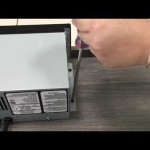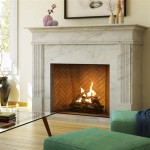Small Backyard Fireplaces: Enhancing Outdoor Spaces
The allure of a crackling fire, the warmth it provides, and the ambiance it creates are undeniable. The appeal of a fireplace extends beyond the interior confines of a home and finds resonance in outdoor settings. For homeowners with limited outdoor space, small backyard fireplaces offer a practical solution to enjoy these benefits without overwhelming their yards. These compact fireplaces come in a variety of designs, materials, and fuel options, allowing homeowners to tailor their choice to their aesthetic preferences and functional needs.
Small backyard fireplaces function as a focal point, enhancing the visual appeal of a landscape. They provide a gathering place for friends and family, promoting outdoor socialization and relaxation. Beyond their aesthetic and social benefits, these fireplaces can also extend the usability of outdoor spaces into cooler months, allowing homeowners to enjoy their yards year-round. The selection process involves considering several factors to ensure the chosen fireplace aligns with the homeowner’s lifestyle, budget, and spatial limitations.
Types of Small Backyard Fireplaces
The market offers a diverse range of small backyard fireplaces, each with unique characteristics and advantages. Understanding these different types is crucial for making an informed decision. The primary classifications are based on fuel type, structural design, and materials used.
Based on Fuel Type:
*
Wood-Burning Fireplaces:
These fireplaces offer the traditional experience of a real wood fire, complete with the authentic aroma and crackling sounds. They typically consist of a firebox, a chimney or flue for venting smoke, and a hearth. Wood-burning fireplaces require a readily available source of firewood and proper ventilation to ensure safe operation. They also necessitate regular cleaning to remove ash and creosote build-up. Local regulations might restrict wood-burning fireplaces due to air quality concerns, so it's crucial to check with local authorities before installation.*
Gas Fireplaces:
Gas fireplaces offer convenience and ease of use. They operate on natural gas or propane and can be ignited with the flip of a switch or the push of a button. They produce a consistent flame and heat output, and they require minimal maintenance compared to wood-burning fireplaces. Gas fireplaces typically vent directly through a wall or roof, and installation requires connecting to a gas line, usually best left to qualified professionals.*
Propane Fire Pits:
Frequently included in the category of small fireplaces, these pit-style units are mobile and self-contained, fueled by a propane tank. They require no venting and can be easily moved around the yard. Propane fire pits are a popular choice for their portability and ease of use, offering a clean-burning flame and adjustable heat settings. However, the propane tanks need to be refilled periodically.*
Ethanol Fireplaces:
Ethanol fireplaces burn a liquid fuel derived from plant-based sources. These fireplaces are ventless, making them suitable for smaller spaces and patios. They produce a clean-burning flame without smoke or ash, requiring minimal maintenance. Ethanol fireplaces are primarily decorative and may not provide significant heat output compared to other types.Based on Structural Design:
*
Freestanding Fireplaces:
These fireplaces are self-contained units that can be placed anywhere in the yard. They come in various styles, from traditional to contemporary, and they can be made from materials such as brick, stone, or metal. Freestanding fireplaces offer flexibility in terms of placement and design.*
Built-in Fireplaces:
Built-in fireplaces are integrated into the landscape design, typically constructed as part of a patio or outdoor kitchen. They provide a more permanent and customized look. Built-in fireplaces require professional installation and careful planning to ensure proper structural integrity and ventilation.*
Fire Bowls/Pits:
These are generally smaller and typically have a circular or square shape. Often made from metal, concrete, or stone, they offer a modern and minimalist aesthetic. They can be fueled by wood, propane, or natural gas and are easy to install and use.Based on Materials Used:
*
Brick Fireplaces:
Brick offers a classic and timeless look, providing durability and heat retention. Brick fireplaces require proper mortar joints and a stable foundation.*
Stone Fireplaces:
Stone fireplaces offer a rustic and natural aesthetic, blending seamlessly with the landscape. Stone can be used in various forms, including stacked stone, fieldstone, or flagstone.*
Metal Fireplaces:
Metal fireplaces, particularly those made from steel or cast iron, offer durability and a more contemporary look. Metal fireplaces can be powder-coated or painted to match the surrounding decor.Factors to Consider When Choosing a Small Backyard Fireplace
Selecting the right backyard fireplace entails careful consideration of several factors to ensure it meets the homeowner’s needs and preferences. These factors include space availability, budget, intended use, fuel source, and aesthetic considerations.
Space Availability:
The size of the backyard is a primary constraint. A large, elaborate fireplace in a small yard will appear disproportionate and may overwhelm the space. Measure the intended area and select a fireplace that fits comfortably without obstructing pathways or dominating the view. Consider the surrounding landscape and choose a location that allows for adequate seating and circulation around the fireplace.Budget:
Fireplace costs vary widely depending on the type, size, materials, and installation requirements. Wood-burning fireplaces, especially custom-built designs, can be more expensive due to the need for professional masonry work and a chimney. Gas fireplaces require connection to a gas line, which can add to the installation cost. Propane fire pits are generally more affordable, but the recurring cost of propane refills must be factored in. Establish a realistic budget and explore options that align with financial constraints.Intended Use:
Determine the primary purpose of the fireplace. If the goal is to create a cozy ambiance and occasional warmth, a smaller, decorative fireplace might suffice. If the intent is to provide significant heat for outdoor gatherings during cooler months, a larger, more powerful heat source would be necessary. Consider how often the fireplace will be used and choose a fuel source that aligns with intended usage patterns.Fuel Source:
The choice of fuel source significantly impacts the fireplace’s convenience, maintenance requirements, and environmental impact. Wood-burning fireplaces offer the traditional appeal of a real fire but require a readily available source of firewood and regular cleaning. Gas fireplaces are convenient and easy to use but require connection to a gas line. Propane fire pits are portable and self-contained but require propane tank refills. Ethanol fireplaces are clean-burning and ventless but may not provide significant heat output. Evaluate the pros and cons of each fuel source based on personal preferences and lifestyle.Aesthetic Considerations:
The fireplace should complement the existing landscape design and reflect personal taste. Consider the style of the house, the materials used in the patio or deck, and the overall aesthetic of the backyard. Choose a fireplace that blends seamlessly with the surroundings and enhances the visual appeal of the outdoor space. Consider factors such as the color, texture, and shape of the fireplace to ensure it aligns with the homeowner’s design vision.Safety and Maintenance
The safe operation and longevity of a small backyard fireplace rely on proper usage and regular maintenance. Adhering to safety guidelines and performing routine maintenance tasks are crucial for preventing accidents and ensuring the fireplace continues to function optimally.
Safety Precautions:
*
Clearance from Combustibles:
Maintain a safe distance between the fireplace and any combustible materials, such as furniture, plants, or fences. Consult the manufacturer’s instructions for recommended clearance distances.*
Supervision:
Never leave a fire unattended. Always supervise children and pets when the fireplace is in use. Keep a fire extinguisher or a water hose nearby in case of emergencies.*
Proper Ventilation:
Ensure adequate ventilation, especially with wood-burning fireplaces. Avoid using the fireplace in enclosed spaces or during periods of high winds. Smoke inhalation can be dangerous, so proper ventilation is essential.*
Spark Arrestors:
Install a spark arrestor on wood-burning fireplaces to prevent embers from escaping and potentially causing fires. The spark arrestor should be regularly inspected and cleaned to ensure proper functionality.*
Carbon Monoxide Detectors:
Install carbon monoxide detectors in the home if using an indoor/outdoor fireplace. This is essential for detecting carbon monoxide leaks, which can be fatal.Maintenance Tasks:
*
Cleaning:
Regularly clean the fireplace to remove ash, creosote, and debris. Ash build-up can reduce airflow and increase the risk of chimney fires. Creosote is a flammable substance that accumulates in chimneys and can ignite if not removed. Clean the fireplace after each use or at least once a month.*
Inspection:
Inspect the fireplace regularly for signs of damage or wear. Check for cracks, loose bricks, or corroded metal. Repair any damage promptly to prevent further deterioration and ensure safe operation.*
Chimney Sweeping:
Have the chimney professionally swept at least once a year to remove creosote and other debris. A professional chimney sweep can also inspect the chimney for structural damage and recommend necessary repairs.*
Gas Line Inspection:
Have the gas line inspected annually by a qualified technician to ensure there are no leaks. Gas leaks can be dangerous and can pose a fire or explosion hazard.*
Covering:
Protect the fireplace from the elements when not in use. Cover the fireplace with a waterproof cover to prevent rain, snow, and debris from entering. This will help prolong the life of the fireplace and prevent rust or corrosion.
30 Outdoor Fireplace Ideas Cozy Fireplaces

53 Most Amazing Outdoor Fireplace Designs Ever

Small Outdoor Fireplace Ideas

Outdoor Fireplace Ideas The Home Depot

Outdoor Fireplace Design Styles Landscaping Network

Outdoor Fireplace Kits Masonry Stone
:max_bytes(150000):strip_icc()/bring-holidays-outside-x-50f80e4865984b36b603a1de82d2938b.jpg?strip=all)
23 Outdoor Fireplace Ideas For A Glowing Retreat

Outdoor Chimney Google S Fireplace Designs Backyard

25 Outdoor Fireplace Ideas Fireplaces Fire Pits

45 Beautiful Outdoor Fireplace Ideas Install It Direct








